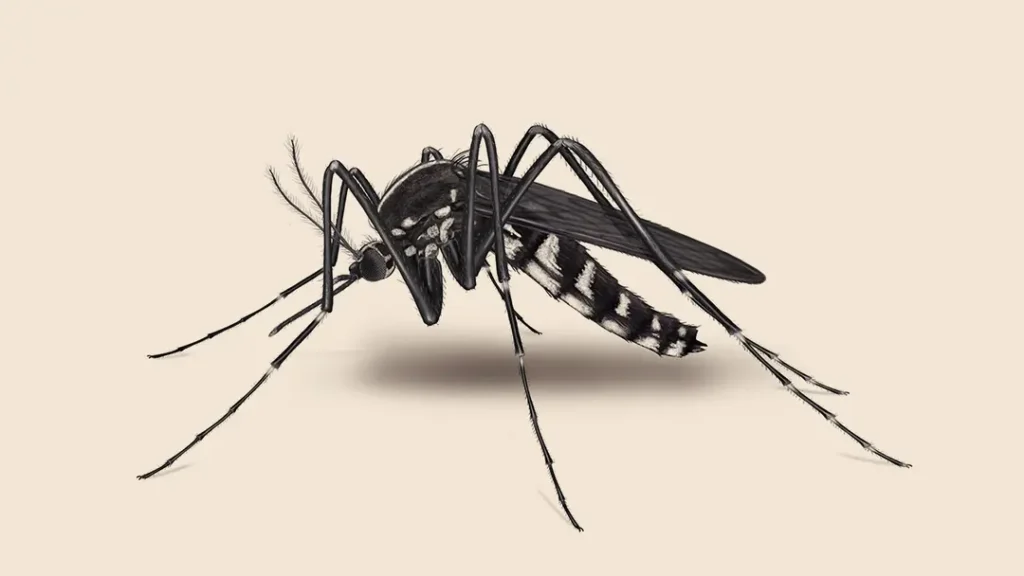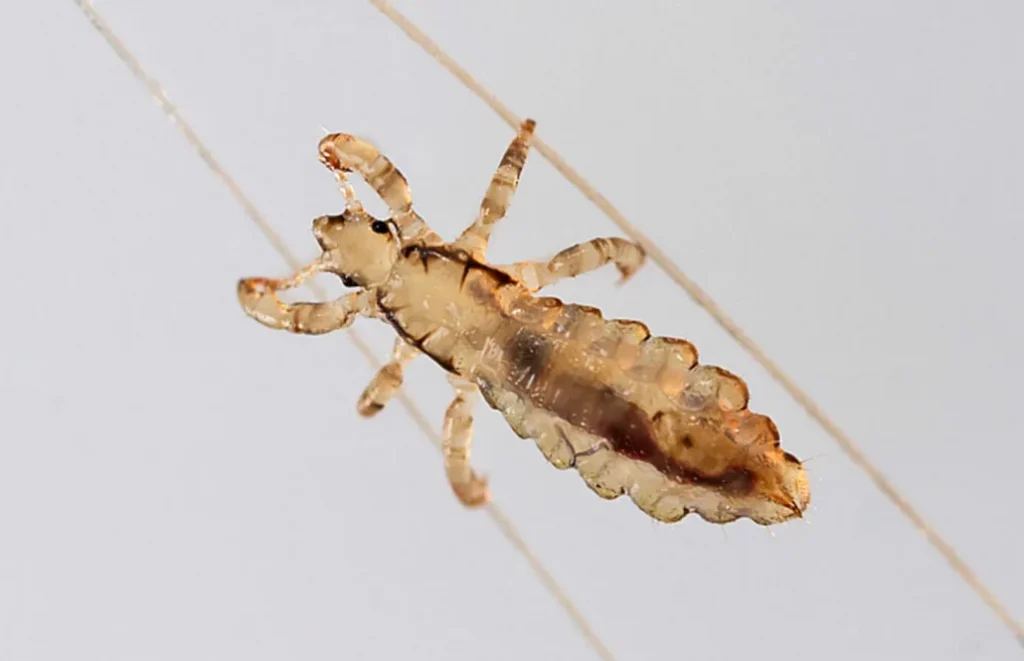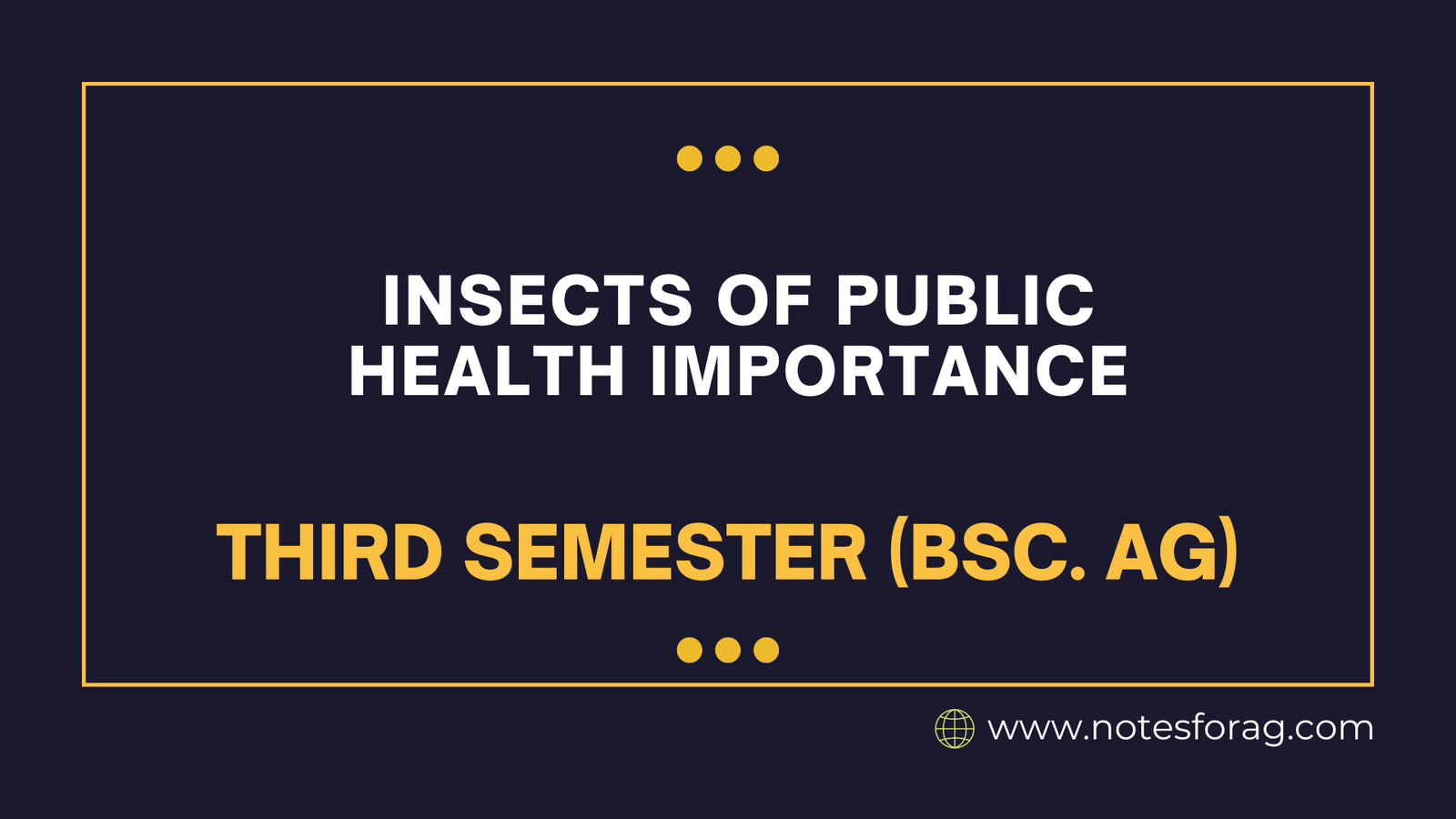Insects of public health concern include those that harm human health by transferring diseases, inducing allergic reactions, or infesting homes. Examples include mosquitoes, which spread malaria, dengue, and Zika; flies and cockroaches, which contaminate food and spread bacteria; ticks and fleas, which transmit diseases like Lyme disease and plague; and lice and bed bugs, which cause skin irritations and infestations. Managing these insects of public health is crucial for preventing the spread of illnesses and enhancing the public health.
Table of Contents
Introduction to Insects and Public Health
Insects are a significant part of ecosystems and play important roles in a variety of biological processes. However, some species are designated as insects of public health interest because of their direct or indirect effects on human health. These insects, which include vectors such as mosquitoes, fleas, ticks, and flies, play an important role in the transmission of pathogens that cause diseases such as malaria, dengue fever, Lyme disease, and others. Understanding the function of insects of public health is critical for developing effective management and prevention plans.
The link between insects and disease transmission highlights the serious threat they pose. Mosquitoes, for example, are known for carrying viruses such as Zika, West Nile, and Chikungunya, resulting in major morbidity and mortality worldwide. Similarly, ticks transmit Lyme disease and other tick-borne infections, which afflict millions of people each year. Such linkages have highlighted the importance of comprehensive public health programs focused at managing and minimizing the effects of these disease-carrying insects.
key Insects of Public Health Importance
1. Mosquitoes (Family: Culicidae)

Public Health Concerns
Mosquitoes are regarded as one of the world’s most deadly insects due to their propensity to transmit fatal diseases.
Diseases transmitted
- Malaria: Plasmodium parasites cause the disease, which is transmitted by Anopheles mosquitoes.
- Dengue, zika, chikungunya, and yellow fever: Viral illnesses spread by Aedes mosquitos.
- West Nile Virus: Culex mosquitos are responsible for the spread.
Health Impact
These diseases cause millions of deaths and illnesses globally, particularly in tropical and subtropical countries. Vector control and mosquito-borne illness prevention are crucial public health interventions.
2. House Flies (Musca domestica)
Public Health Concerns
House flies are renowned for spreading germs and other infections because they thrive in filthy conditions and regularly come into touch with food and human homes.
Disease Spread
- Typhoid Fever.
- Cholera
- Dysentery
- Salmonellosis
Health Impact
House flies can carry disease-causing organisms on their bodies, polluting food and water supplies and resulting in foodborne illnesses and diarrhea.
3. Cockroaches (Order: Blattodea)
Public Health Concerns
Cockroaches are carriers of different infections and can cause allergies and asthma in humans, particularly in metropolitan areas.
Health Risks
- Gastrointestinal infections: Spread microorganisms such as E. coli and Salmonella.
- Allergic Reactions: Cockroach droppings and body pieces might worsen asthma and allergies.
Health Impact
Cockroach infestations are frequent in places with inadequate sanitation and can have serious consequences for human health, particularly in youngsters and the elderly.
4. Fleas (Order: Siphonaptera)
Public Health Concerns
Fleas are ectoparasites that feed on blood from humans and animals. They are well-known for their role in the transmission of diseases such as plague.
Disease Spread
- Plague: Caused by Yersinia pestis, which was formerly carried by infected rat fleas.
- Murine typhus: A flea-borne bacterial illness.
Health Impact
Flea bites can cause itching, pain, and, in some circumstances, allergic responses. While the diseases they spread are less widespread today, they have historically had a terrible effect on public health.
5. Lice (Order: Phthiraptera)

Public Health Concerns
Lice infestations, especially in the scalp, torso, and pubic areas, can spread through intimate contact. While lice can not transmit severe diseases, they can cause pain and spread some bacterial infections.
Health Risks
- Head Lice: Common among school-aged children, producing itching and discomfort.
- Body Lice: Can transmit pandemic typhus and trench fever.
Health Impact
Lice infestations are especially harmful in crowded or filthy environments. Control measures are centered on personal hygiene and environmental cleanliness.
6. Bed Bugs (Cimex lectularius)
Public Health Concerns
Bed bugs consume human blood, resulting in itching, skin responses, and psychological stress. Though they are not known to transmit diseases, their bites can cause secondary infections through scratching.
Health Risks
- Skin irritation: Bites cause irritation, rashes, and allergic reactions.
- Mental Health: Bed insect infestations can lead to worry, insomnia, and stress.
Health Impact
Bed bug infestations are prevalent in homes, hotels, and dormitories. While they are not disease vectors, their bites can have a severe impact on both physical and mental health.
7. Ticks (Order: Ixodida)
Public Health Concerns
Ticks feed on the blood of mammals, birds, and reptiles, making them carriers for a variety of deadly diseases.
Diseases transmitted
- Lyme Disease: Caused by Borrelia bacteria, which are primarily transmitted by black-legged ticks (Ixodes scapularis).
- Rocky Mountain Spotted Fever: A bacterial illness spread by dog ticks.
- Tularemia with anaplasmosis: Other tick-borne illnesses.
Health Impact
Tick-borne infections are common in some geographic areas, including the United States and Europe. Proper precautions, such as avoiding tick-prone regions and wearing insect repellents, are critical for decreasing tick bites.
8. Sand Flies (Family: Psychodidae)
Public Health Concerns
Sand flies are known carriers of parasitic illnesses, especially in tropical and subtropical areas.
Disease Spread
- Leishmaniasis: A parasitic sickness caused by the Leishmania parasite.
- Sandfly Fever: A viral infection caused by a Phlebovirus.
Health Impact:
If not treated, leishmaniasis can lead to skin sores, severe organ damage, and even death. Sand flies thrive in rural and disadvantaged places when public health resources are few.
Mosquitoes, ticks, and flies represent significant public health threats because of their potential to transmit diseases. Effective public health interventions, such as pest control methods, enhanced sanitation, and awareness campaigns, are required to avoid and reduce the impact of these insects on human health.
Frequently Asked Questions
What are insects of public health importance?
Insects of public health importance are those that have a direct impact on human health by transmitting diseases, inducing allergic reactions, or infesting human settings. Mosquitoes, flies, ticks, lice, fleas, and cockroaches are some common examples.
Why are mosquitoes considered dangerous?
Mosquitoes are dangerous because they spread lethal diseases such as malaria, dengue fever, Zika virus, and West Nile virus. They are a major vector for human disease transmission, especially in tropical and subtropical regions.
Related Articles

